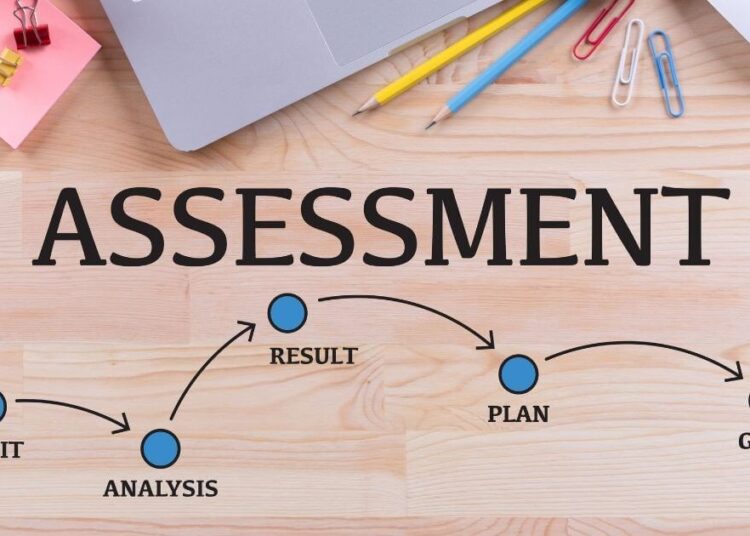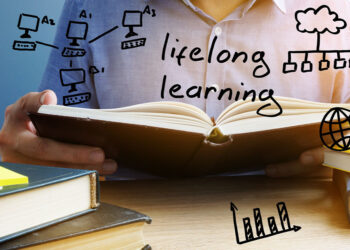The Standardized Test Trap: Are We Measuring True Learning?
Is the traditional standardized test truly reflecting a student’s capabilities, or are we missing the bigger picture? Let’s dive into the evolving landscape of educational assessment.
1. Rethinking Standardized Tests
The reliance on single, high-stakes standardized tests to gauge student learning is facing increasing scrutiny in the US. Many educators and institutions are questioning whether these tests accurately capture a student’s true potential and acquired knowledge. The trend is shifting towards more holistic and continuous assessment methods.
2. The Rise of Alternative Assessments
In a move towards more inclusive evaluation systems, prestigious universities such as Harvard and Stanford have made SAT/ACT scores optional. Innovative approaches like the Mastery Transcript are gaining traction, focusing on demonstrating skills and growth through portfolios rather than traditional grades. This shift emphasizes a student’s comprehensive abilities over a single test score.
3. Embracing Continuous Evaluation
Public schools are also experimenting with shorter, more frequent assessments that are culturally responsive. New Mexico, for example, uses brief, adapted academic measurement tools administered at the beginning, middle, and end of the year. This allows for tracking progress and providing timely support, moving away from the “one-size-fits-all” approach of traditional standardized tests.
4. The Role of Technology in Assessment
Technology is playing a crucial role in transforming how we assess learning. Systems like Lexia’s “Assessment Without Testing” seamlessly integrate evaluation into classroom activities. This provides students with personalized feedback in a low-pressure environment, fostering deeper learning and growth.
5. A Glimpse into the Future of Assessment
The move away from high-stakes standardized tests towards continuous, varied assessments is evident in the increasing number of interim evaluations.
Formative Assessment: The Invisible Hand Guiding Student Success
Explore how the shift towards formative assessment is reshaping education, offering personalized guidance for student growth and addressing the challenges posed by AI.
1. The Rise of Formative Assessment in Higher Education
In recent years, there’s been a noticeable increase in the emphasis on formative assessment within university curricula, particularly in countries like the United States. This shift is partly driven by concerns about the validity of traditional summative assessments in the age of AI, prompting institutions to explore more continuous and process-oriented evaluation methods.
2. Balancing Feedback and Student Well-being
While the intention behind increasing formative assessments is to foster deeper learning, it’s crucial to consider the potential for increased student stress. Over-assessment can be counterproductive, highlighting the need to strike a balance between providing effective feedback and managing student workload.
3. Challenges in Implementing Formative Assessment
Efforts to integrate formative assessment into daily teaching also face challenges at the primary and secondary levels. These include increased burdens and feelings of fatigue among principals and teachers, particularly when implementing mechanisms like Professional Learning Communities (PLCs).
4. Navigating the Future of Educational Assessment
The overarching trend is clear: moving beyond standardized testing to embrace more flexible and targeted assessment methods that promote continuous student growth. The critical question now is how to effectively balance the benefits of formative assessment with the practical considerations of implementation and student well-being.
Summative Assessment Unveiled: Beyond Just Grades and Scores
Explore how educational assessment is evolving beyond traditional tests to embrace a more holistic view of student learning and growth in the U.S.
1. The Evolving Landscape of Educational Assessment
The conversation around educational assessment in the U.S. is shifting. There’s a growing movement away from solely relying on standardized summative tests. Instead, educators and policymakers are looking at more comprehensive ways to measure what students truly know and can do. This includes considering skills that go beyond rote memorization and encompass deeper learning.
2. A Balanced Approach to Assessment
Leading educational organizations are championing a balanced assessment system. This system integrates different types of assessments—summative, interim, and formative—to support student growth at all levels, from state to classroom. The goal is to provide a more complete picture of student progress and inform instruction effectively.
3. Addressing Persistent Achievement Gaps
The pandemic has widened existing achievement gaps, especially for vulnerable student populations. Low-income students, English language learners, and students of color continue to face significant challenges. Experts emphasize the need for targeted interventions and support systems to address these disparities and ensure equitable learning opportunities for all.
4. The Limitations of Traditional Summative Assessments
Traditional end-of-year summative assessments often reduce student achievement to a single score or grade. This approach fails to capture essential 21st-century skills such as creativity, critical thinking, and ethical reasoning. There’s a growing recognition that assessments should measure a broader range of competencies to prepare students for success in college, careers, and civic life.
5. Innovative Assessment Models in Action
States like Montana are experimenting with innovative assessment models. These through-year assessment systems provide students with timely, actionable feedback multiple times throughout the year. This allows teachers to adjust their instruction based on student needs, leading to improved learning outcomes. The focus is on using assessment data to inform instruction and support student growth, rather than simply assigning grades.
Feedback Loops in Education: Crafting the Perfect Rubric for Growth
Explore how feedback loops and rubrics can revolutionize education, fostering deeper learning and student growth through dynamic assessment strategies.
1. The Power of Feedback Loops in Modern Education
Recent educational research underscores the pivotal role of feedback loops in cultivating deep learning experiences. Rather than relying solely on summative assessments, educators are increasingly recognizing the value of continuous, iterative feedback processes that guide students toward mastery. This approach emphasizes growth and understanding over simple grades.
2. Deconstructing Rubrics for Actionable Insights
Innovative tools, exemplified by the AGACCI multi-agent system, are transforming how we utilize rubrics. By dissecting rubrics into actionable criteria, these systems facilitate multi-dimensional analysis of student work. This modular approach not only enhances the reliability and interpretability of assessments but also enables efficient and targeted feedback.
3. Real-Time Data and Reflective Practices
Effective feedback loops hinge on the integration of real-time data collection and regular reflection. Methodologies like the Plan-Do-Study-Act (PDSA) cycle provide a structured framework for continuous improvement. This cyclical process encourages teachers and students to collaboratively analyze data, adjust strategies, and monitor progress.
4. Shifting Focus: Engagement and Growth Over Standardized Tests
Forward-thinking school districts are embracing a more holistic approach to assessment. By combining quantitative indicators with qualitative data, such as brief surveys and student work displays, educators gain a more nuanced understanding of student progress. This shift prioritizes engagement, teacher confidence, and genuine growth trajectories over mere standardized test scores.
5. The Future of Educational Assessment
The trend in educational assessment points towards a greater emphasis on dynamic, diverse evidence. Moving beyond the limitations of standardized tests, educators are seeking methods that promote deeper understanding and critical thinking skills. This evolution signifies a commitment to fostering a more engaging and effective learning environment for all students.
Integrating Different Assessments: A Holistic Approach to Educational Evaluation
Explore how educators are shifting towards comprehensive assessment strategies that capture the full spectrum of student development and learning.
1. The Evolution of Assessment Practices
Educational assessment is undergoing a significant transformation, moving away from a singular focus on standardized tests. The emphasis is now on integrating diverse evaluation methods to gain a more profound understanding of student learning. This holistic approach aims to capture not only academic achievement but also students’ individual interests and learning needs.
2. California’s Framework for Teaching
California’s framework for teaching practice exemplifies this shift. It encourages educators to employ both formative and summative assessments to inform instructional decisions. This framework underscores the importance of understanding student progress and tailoring instruction to meet their unique needs.
3. Equity and Comprehensive Assessment
A core principle of this evolving approach is equity. Teachers are expected to integrate multiple assessment measures, such as performance tasks and self-assessment, to gain a comprehensive view of each learner’s progress across academic and social-emotional domains. This includes engaging students in self-evaluation and collaborating with peers to analyze shared data.
Q&A
Question 1: What is the main criticism leveled against traditional standardized tests in the US, as discussed in the provided texts?
Answer: The texts highlight increasing scrutiny of the reliance on high-stakes standardized tests to measure student learning. Critics argue that these tests don’t accurately capture a student’s true potential and knowledge, failing to assess crucial skills like creativity and critical thinking, and potentially exacerbating achievement gaps. There’s a growing movement towards more holistic and continuous assessment methods.
Question 2: What alternative assessment methods are gaining popularity, and what are their key advantages?
Answer: The texts mention several alternatives: optional SAT/ACT scores at prestigious universities, the Mastery Transcript focusing on skill demonstration through portfolios, shorter and more frequent culturally responsive assessments in schools like New Mexico, and technology-integrated systems like Lexia’s “Assessment Without Testing” offering personalized feedback. These methods aim for more inclusive evaluation, continuous progress monitoring, and deeper learning by moving away from a single, high-stakes test score.
Question 3: How are formative assessments being integrated into higher education, and what challenges are involved?
Answer: Higher education institutions are increasingly emphasizing formative assessments, driven by concerns about the validity of traditional summative assessments in the AI age. Data shows a significant rise in the average number of formative assignments per semester. However, challenges include balancing feedback with student well-being (preventing over-assessment and stress) and implementing these methods effectively at primary and secondary levels, where teachers and principals face increased workloads.













